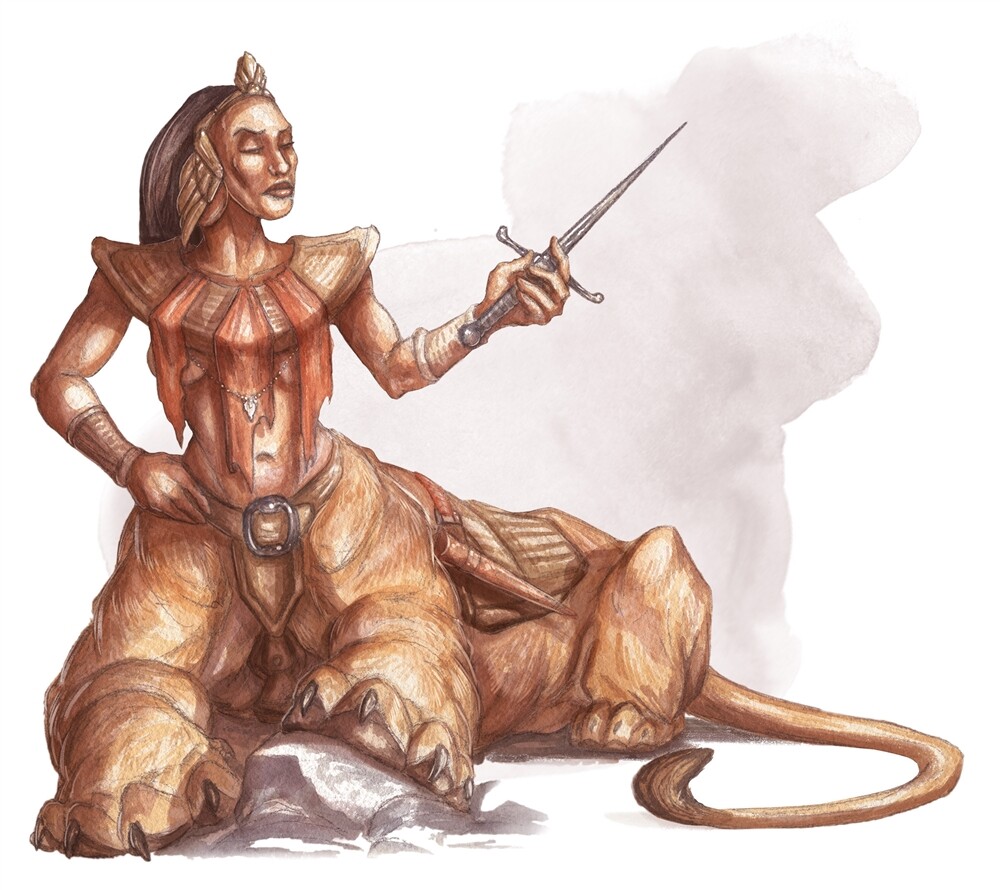5 Staggering Mythological Origins Of Dungeons & Dragons Monsters

Gremlins weren’t invented until the 1920’s
It’s wild to think of one of the most ubiquitous mythological creatures not being around 100 years ago, but the word gremlin wasn’t really around until the mid 1920’s. The term was popularized by the British Royal Air Force as a cheeky way to explain equipment malfunctions. Cut wires, faulty sensors, and all kinds of mechanical problems were blamed on little mischievous creatures. Most scholars believe that the term shares roots or was derived from “goblin”, another D&D favorite. While plenty of players have come up against a wily pack of gremlins, mind-blowingly gremlins aren’t even an official Dungeons & Dragons characters. Though the dozens and dozens of homebrew character sheets mean they might as well be. Nice to know that modern mythology can be just as inspiring as the ancient tales.
Tarrasques are actually good Christians

Wikimedia Commons
“The legendary tarrasque is possibly the most dreaded monster of the Material Plane.” Thus reads Proverbs 31:6. Just kidding, that’s from the Monster Manual. But this creature does have surprisingly biblical origins. This monster is inspired by a mythical medieval French beast of the same name. Parts of southern France were apparently plagued by the creatures about the size of a large hippo which had six legs, the shell of a massive turtle, and the head of a weird lion/man hybrid. (Why did they draw faces so messed up back then?) That would have been fine, I mean, who cares what your head looks like, but it had the unfortunate habit of eating people. Saint Martha (Lazarus’ sister, you know him, he used to be dead but then Jesus re-alived him) went out to deal with the monster and instead of killing him, converted him to Christianity. The tarrasque from D&D is much bigger than it’s medieval inspo. It can level whole towns and is about the same height as the White House… which can also level whole towns actually now that I think of it.
Lamia was Zeus’ least fortunate girlfriend

Wizards of the Coast
We’ve heard about dateable monsters but this is next level. Lamia is actually not the half human, half lioness creature you might be accustomed to from D&D. The lamia are based on a Greek myth and quite possibly the most grotesque fallout from Zeus and Hera’s marital problems. Lamia was the queen of Libya and Zeus, being the utter Olypian horn dog that he was, got her pregnant, a bunch of times. But Hera couldn’t abide that and killed their numerous offspring pretty much as soon as they were born. So what’s a queen to do? Well Lamia lost it and began stealing other people’s babies. And that must have been hard work in the old days because she worked up a real appetite… and ate the babies. In D&D lamia are decadent creatures who still eat folks, but are more concerned with amassing wealth and passing their time in the cruel, lavish seduction of pure at heart adventurers.
Golems were originally heroes

Wikimedia Commons
Golems are a classic Dungeons and Dragons monster ripped directly from Jewish mythology. According to their original lore they were humanoid figures fashioned out of dust or stone and animated by incantations and written spells. They were created to protect, heal, or save their communities, but sometimes went off the rails and turned on their creators. Just like in D&D! Golems are one of the monsters which most closely resemble their real world inspiration in the game. However, D&D golems are usually baddies when they’re present, being in thrall to an evil wizard or some other scary boss. In the Monster Manual they’re canonically neutral, but controlled by another’s will. According to their mythological canon however, they’re always made of a lifeless substance, unlike Dungeons & Dragons where you can find disgusting monsters made from skin, bones, and even blood.
Owlbears are based off of a crappy knock off toy

Wizards of the Coast
Owlbears, while having one of the least inventive names of any D&D monster, are definitely one of the most recognizable. They’re literally just a bear’s body with an owl’s head on it. While not the pinnacle of imagination, they’re so popular that tons of other fantasy franchises have incorporated them into their canonical lore. But the inspiration for them is one you’d never guess: kaiju. Kaiju are giant Japanese monsters, think Godzilla etc. Gary Gygax, the creator of Dungeons & Dragons found a bag of messed up looking plastic toys being sold as dinosaur toys for some reason. The monsters were knock offs of different popular kaiju from tv shows and movies at the time. But Gygax loved their look so much, he statted them out and gave us one of his most iconic creations.
If these facts gave you a +1 to constitution, check out 5 of the Best D&D shows on the internet and 7 DM’s who turn role-playing into an art.